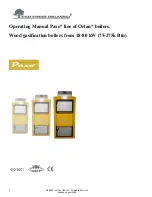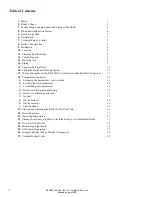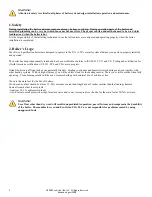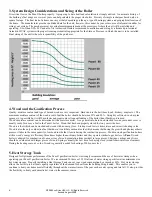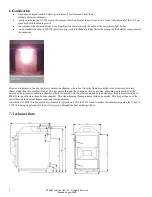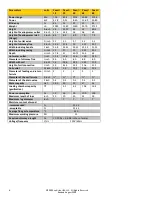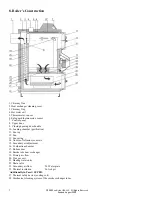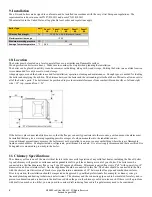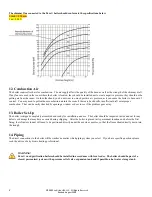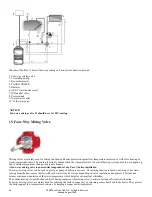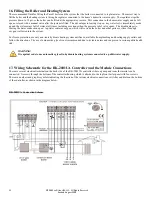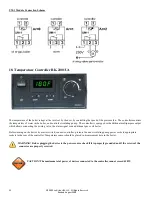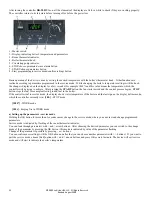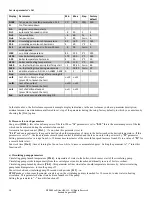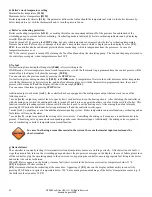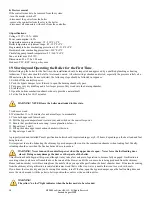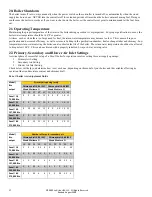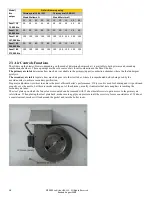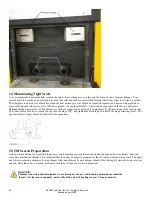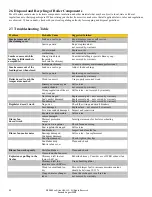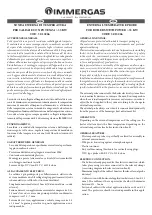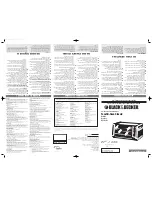
15
©2009 Eco-Orlan USA LLC. All Rights
Reserved
.
Revised August 2009.
d) Boiler’s work temperature setting
Minimal boiler temperature
[L150]
Maximum boiler’s temperature
[H195]
Boiler temperature hysteresis
[h 10]
- this parameter defines what value should the temperature of water in the boiler decrease by,
below temperature set with the thermostat knob, to turn the pressure fan on.
e) Boiler’s overheating protection
Boiler overheating temperature
[A210]
– exceeding this value causes permanent turn off of the pressure fan and launch of the
circulating pump, to prevent boiler overheating. Overheating mode is indicated by boiler overheating indicator and by displaying
error
[E 2]
on the display.
It can be turned off by pressing the
STOP
button, but only when temperature decreases below boiler’s overheating temperature.
Pressure fan turns off also in case of damage of the boiler’s temperature sensor, which is displayed on the display by error
[E 1].
STB
- the controller also has additional protection from overheating, which is independent from the processor. In case of a
temperature increase over
200°F, the control process is turned off by turning the fan off and launching the circulating pump. The fan and the pump are joined to
the control process again, when temperature reaches 190°F.
f) No fuel
No-fuel testing time during fuel firing start
[Fd60]
- after switching to the
WORK mode, if water temperature doesn't reach temperature set with the thermostat in programmed time, the control process will be
turned off and the display will show the message:
[FUEL].
You can return to the previous mode by pressing the
STOP
button.
No-fuel testing time during work mode [
Fb30]
- in
WORK
mode, if temperature of water in the boiler decreases below temperature
set with the thermostat, by hysteresis value, and don't reach temperature set with the thermostat in programmed time, the control
process will be turned off and the display will show the message:
[FUEL].
You can cancel the alarm by pressing
STOP
button.
Additional output work mode
[Ar 0]
- the controller has been equipped with a multipurpose output that can work in one of the
following modes:
* mode
[Ar 0]
- output may control the oil or gas boiler if such boiler exists in the heating circuit. After switching the controller on
with the main power switch the additional boiler is turned off and it turns on again when there is no fuel in the solid fuel boiler. This
function is useful in heating systems where a solid fuel boiler is used to cut the heating costs. After erasing the no fuel alarm by
pressing STOP button the additional boiler is again turned off and the controller works again
* mode
[Ar 1]
- output may control the additional alarm signaling system. Boiler temperature sensor malfunction, overheating and no
fuel alarms will turn on the alarm
* mode
[Ar 2]
- output may control the mixing valve servo-motor. Controlling the mixing valve requires a room thermostat to be
present. The mixing valve opens and closes depending on the room thermostat input. Additionally, the mixing valve is opened in
case of overheating or boiler’s temperature sensor malfunction.
In case of not having a room thermostat in the system, the room thermostat input contacts must be
short-circuited.
g) Device failures
The controller is constantly testing if its internal circuits and temperature sensor are working correctly. After detection of a fault, it
stops the pressure fan, turns on the circulating pump and shows the proper error message on the display. In case of failure please turn
off the controller, plug the circulating pump to the power source, bypassing the controller, ensure appropriate fuel firing in the boiler
and contact the service technician.
When [
E 1]
error appears on the display, it means fault (short-circuit) in the boiler sensor circuit or temperature below 32°F.
[E 2]
is displayed if boiler overheats.
[E 3]
error means fault and overheating at the same time. Appearing of
[E 1]
error on the display without ability to cancel it by
pressing STOP button, in spite of temperature below 190°F, may mean permanent damage of the boiler’s temperature sensor (e.g. if
the boiler overheated above 300°F).

